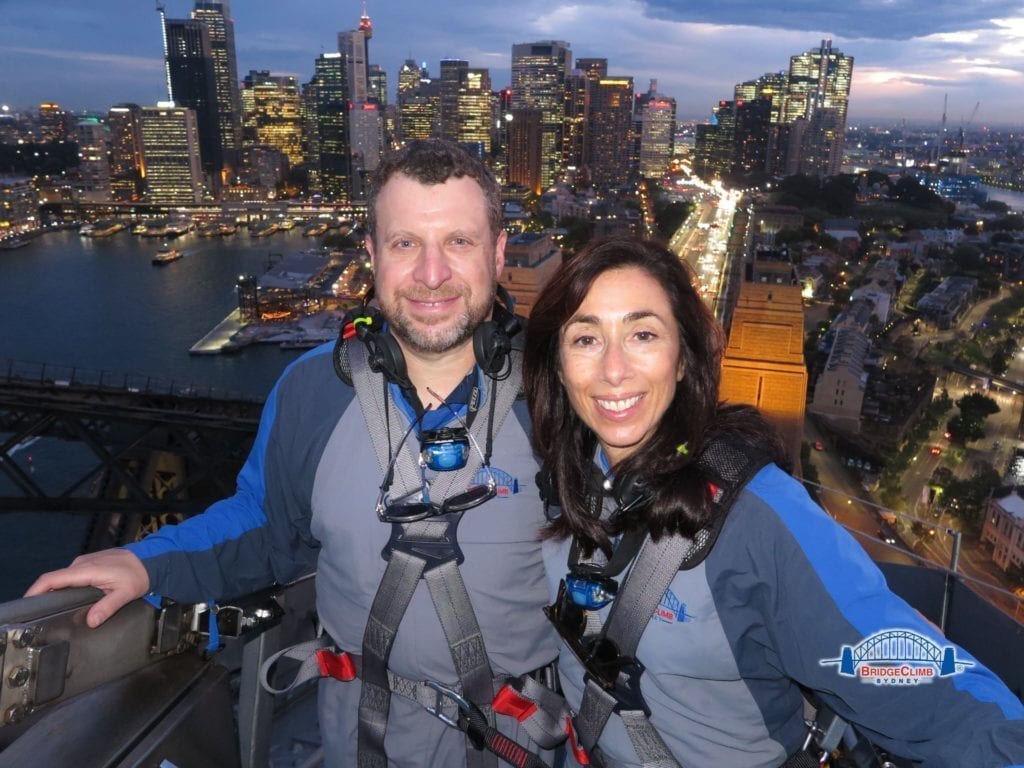
I recently returned from Australia and New Zealand, where I had the pleasure of meeting with representatives of most of the major radio groups in both countries. If you’ve ever visited either country, you know that—thanks to breathtaking scenery, friendly people and excellent cuisine—it’s next to impossible to come home with anything but positive perceptions. But as I reflect on my meetings, I am struck by how positive my perceptions are of the radio industries in both countries.

My wife Sharon and I atop the Sydney Harbour Bridge
In the simplest terms, radio is killing it in Australia and New Zealand. Revenue is strong, the major groups enjoy solid financial positions and the medium’s share of the advertising pie is higher than it is in North America.
In fact, an executive with one of Australia’s largest groups—a very smart guy who I have known for more than a decade—challenged me to convince him that “US radio still has something to offer to Australian radio” and to help him “fall in love with US radio again.” Fortunately, after acknowledging the difficult period our industry went through following The Great Recession, our discussion about the impact of two of our three major groups emerging from bankruptcy, the increased investments companies like mine are seeing in research and the industry’s embrace of podcasting and other new platforms led him to agree that paying attention to developments in radio on our side of the Atlantic could still be a good idea for his company.
If I had to boil down why radio is going so well in Australia and New Zealand into three points, they would be as follows:
- Radio in Australia and New Zealand is embracing change. The radio groups there do not look at the introduction of new technologies as threats but embrace them as opportunities. For example, Commercial Radio Australia—the trade association representing Australia’s radio broadcasters—partnered with Amazon before the introduction of the Echo smart speaker to ensure that any of the country’s 300 AM, FM or DAB+ digital stations can be easily accessed by name or frequency.
- Radio in Australia and New Zealand is investing in nonmusical content. While streaming and other platforms for consuming music are not yet as prevalent as they are in North America, most music stations in both countries’ major markets feature prominent personalities in morning and afternoon drive. Furthermore, the use of syndicated morning shows is much less common than it is the US.
- Radio in Australia and New Zealand does a lot of research. Given what I do for a living, it is refreshing to have conversations with radio groups about what kinds of and how much research they should be doing, as opposed to discussing whether they should do research in the first place. There is plenty of room for the art of programming in Australia and New Zealand; however, radio programmers in both countries get to create their art with objective knowledge about what listeners want and perceive they’re getting from radio.
Each country faces unique challenges, and I want to stress that I am encouraged by the progress I’m seeing on all these fronts by radio groups in North America. Many companies that are embracing new technologies and investing in their brands are seeing their efforts pay off.

A picturesque backdrop of Auckland, New Zealand
While radio professionals around the world can certainly learn best practices and new ideas from North American radio, I think we can all be inspired by what Aussie and Kiwi radio is accomplishing. I absolutely found the 40 hours it took me to travel there and back was well worth it!
